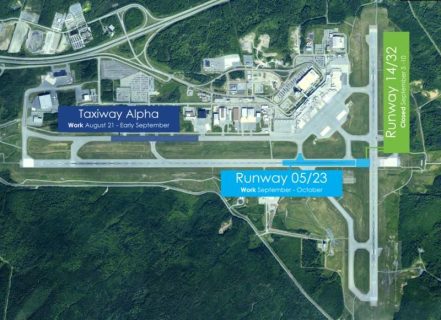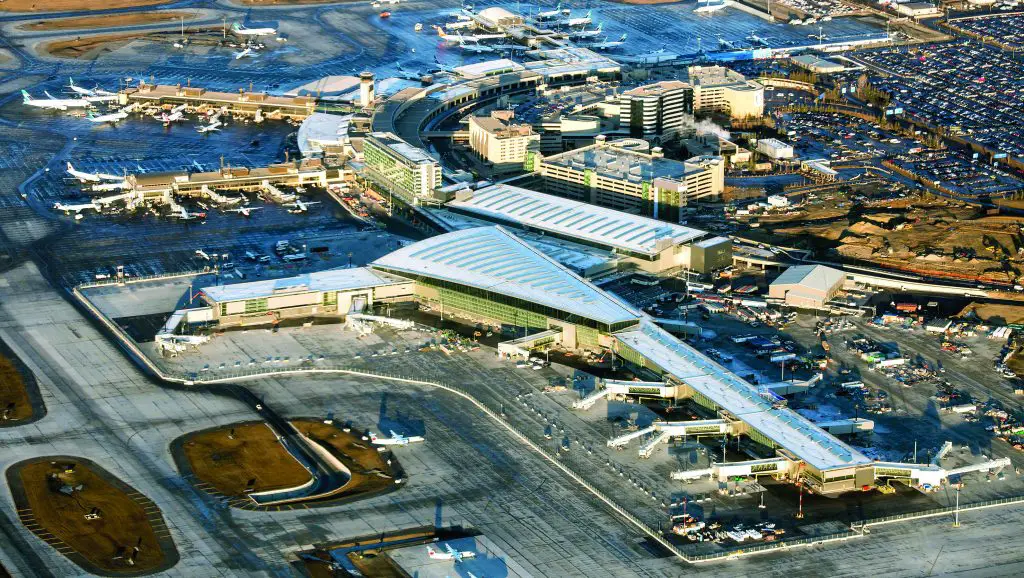Out of a total of 1620 airports, some of the largest airports in Canada by area have been ranked in the list of worlds largest airports within the same parameters. These airports including the Montréal–Trudeau International Airport are ranked among the world’s notable airports such as the 776 km2 King Fahd International (DMM) in Dammam, Saudi Arabia.
Opened in 1941, Montréal–Trudeau which was formerly known and still commonly referred to as Montréal–Dorval International Airport, is the largest airport in Canada by land size. reportedly, the airport has an operations zone area of 70 km2 and a buffer zone area of 290 km2
It is located in Dorval, Quebec and serves Greater Montreal and adjacent regions in Quebec and eastern Ontario, as well as the states of Vermont and northern New York in the United States.
The airport features three runways, two parallel runways aligned in a northeast-southwest direction and a single runway in an east-west direction as well as one two-storied terminal, divided into four different zones which are the public area (departures and arrivals level), the domestic jetty, the international jetty, and the trans-border jetty.
2. Edmonton International Airport (IATA: YEG, ICAO: CYEG)

This is the primary air passenger and air cargo facility in the Edmonton Metropolitan Region of the Canadian province of Alberta. It is spread across about 28 km2 of land located approximately 26 km south-southwest of Downtown Edmonton in Leduc County on Highway 2 opposite the city of Leduc.
The Edmonton International Airport offers scheduled non-stop flights to major cities in Canada, the United States, Mexico, the Caribbean, Central America, and Europe.
3. Calgary International Airport (IATA: YYC, ICAO: CYYC) in Alberta
Branded as YYC Calgary International Airport, this is the third-largest airport in the country. It is located approximately (17 km) northeast of downtown Calgary in Alberta.
The airport covers an area of 20.82 km2, the equivalent of 5,144 acres. It has a total of four runways, two terminal buildings with 5 concourses for passengers, warehouses for cargo handling, and other infrastructure.
Also Read: Top ten largest airports in the USA
In 2019, Calgary International Airport had a total of 17.96 million passengers and 238,843 aircraft movements making it the busiest airport in Alberta and the fourth-busiest in Canada by both measures.
4. Lester B. Pearson International Airport (IATA: YYZ, ICAO: CYYZ)

Also known as Toronto Pearson International Airport or simply Toronto Pearson, Pearson Airport, or just Pearson, this is one of the largest and busiest airports in Canada. It is also the second-busiest international air passenger gateway in the Americas and the 30th-busiest airport in the entire world by passenger traffic. According to a 2019 report, the airport handled approximately 50.5 million passengers.
The airport is located on an approximately 18.6km2 piece of land, 22.5 kilometres northwest of Downtown Toronto. The majority of the airport is situated in the city of Mississauga and a small portion of the airfield, along Silver Dart Drive north of Renforth Drive, extending into Toronto’s western district of Etobicoke.
Lester B. Pearson International Airport features five runways and two passenger terminals along with numerous cargo and maintenance facilities spread over a 1,867 hectares (4,613 acres) piece of land.
5. Halifax Stanfield International Airport (IATA: YHZ, ICAO: CYHZ)
Lastly in our top 5 largest airports in Canada by area, we have the 9.6km2 Halifax Stanfield International Airport.
This is a Canadian airport in Goffs, Nova Scotia, a rural community of the Halifax Regional Municipality that serves the Halifax region, mainland Nova Scotia and adjacent areas in the neighbouring Maritime Provinces.
Opened in 1960 the airport has a single passenger terminal with three levels, namely the main, lower, and departure levels and two runways.
The first runway (05/23) is 2,682m long and it features instrument landing system (ILS) category II standards while the second runway (14/32) is 2,347m in length and conforms to ILS Category I standards.

The area covered by eachof the 5 largest airports in Canada
- Montréal–Trudeau International Airport (Area 70km2)
- Edmonton International Airport (Area 28 km2)
- Calgary International Airport (Area 20.82 km2)
- Lester B. Pearson International Airport (Area 18.6km2)
- Halifax Stanfield International Airport (Area 9.6km2)


Bonjour, au tout début dans l’introduction, vous avez qualifié le Canada comme étant un pays de “l’Afrique du nord”.
A titre informatif, le Canada se situe au nord de l’Amérique mais que l’erreur a dû se glisser par inadvertance.